Barcelona is on most travelers’ bucket lists because it seems to have everything. In the capital of Catalonia, you can find Gothic buildings, beaches, mountains, delicious food, and iconic landmarks designed by Gaudi. As a first-time visitor, you might feel overwhelmed by the sights and activities available. However, this guide for the perfect first trip to Barcelona will ensure your time in the city is spectacular. Join us as we unveil crucial tips, must-see attractions, and insights.
First trip to Barcelona: What You Need to Know
1. Best Time to Travel to Barcelona
Spring (March to May) and autumn (September to November) are generally the best seasons for a first visit to Barcelona. During these months, the weather is moderate, with temperatures ranging from 53 to 77ºF (12°C to 25°C), making sightseeing more comfortable. Additionally, hotel prices are not as high compared to peak summer months.
Discover the best time to visit Spain
Spring also welcomes cultural events like Sant Jordi’s Day in April, a local tradition marked by buying books and roses. Furthermore, the Primera Sound music festival, among the most popular in Europe, also occurs during this period.
Summer (June to August) brings hot and humid weather above 86ºF (30°C). While this season offers extended daylight hours and beach opportunities, it is also when there are more crowds in Barcelona, resulting in long lines at tourist attractions and beaches packed with people.
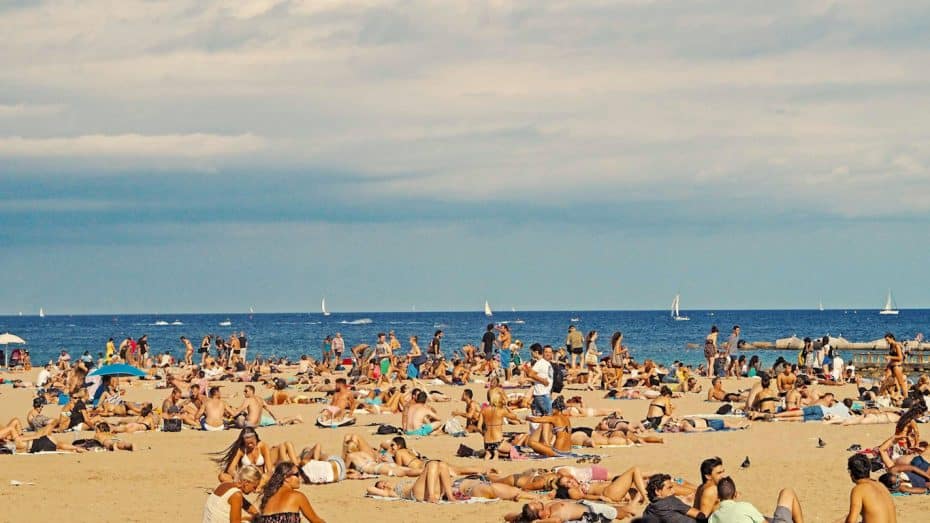
Winter (December to February) typically ranges from 46ºF to 62,6ºF (8°C to 17°C). Despite lower accommodation rates during this season, short days and the potential for rain can make winter less ideal for outdoor activities.
Planning a first trip to Barcelona during spring or autumn will allow you to enjoy favorable weather conditions. Likewise, these seasons reduce costs and overcrowding at events and attractions. Yet, you can always expect crowds in the city, one of the most popular tourist destinations in Europe and the world.
2. Where to Stay in Barcelona
Being so touristy, there are plenty of hotels in Barcelona. However, these districts stand out as the best areas to stay in Barcelona during a first trip:
- Eixample is a district in the city’s central section, north of Plaça Catalunya and east of Passeig de Gràcia. It stands out for its grid-like layout, a pioneering design by urban planner Ildefons Cerdà in the 19th century. This neighborhood is also famous for its Modernist architecture, including the iconic Sagrada Familia by Antoni Gaudí. Likewise, Eixample is among the best areas to stay in Barcelona for nightlife because of its many bars and clubs, including the city’s gay district, Gaixample.
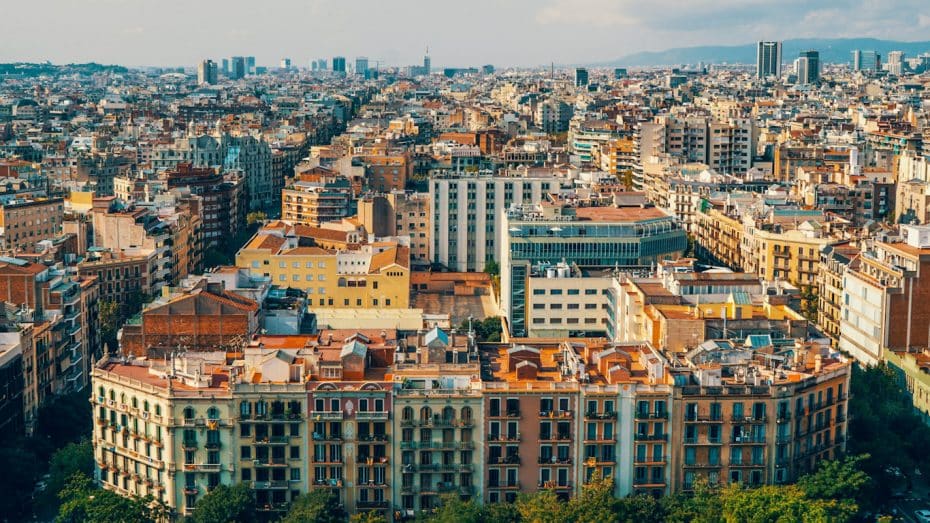
- Ciutat Vella. The Ciutat Vella (Old Town) combines three of Barcelona’s most visited neighborhoods: El Born, the Barri Gòtic (Gothic Quarter), and El Raval. So, you will be in the city’s heart by staying here. This lively district features narrow medieval streets and landmarks dating back to Roman times. Thus, the Ciutat Vella houses attractions like the Cathedral of Barcelona (Catedral de la Santa Creu i Santa Eulalia), built from the 13th to 15th centuries. Other must-see sites include the Picasso Museum and the Parc de la Ciutadella. Additionally, this district has some of the most charming hotels in Barcelona.
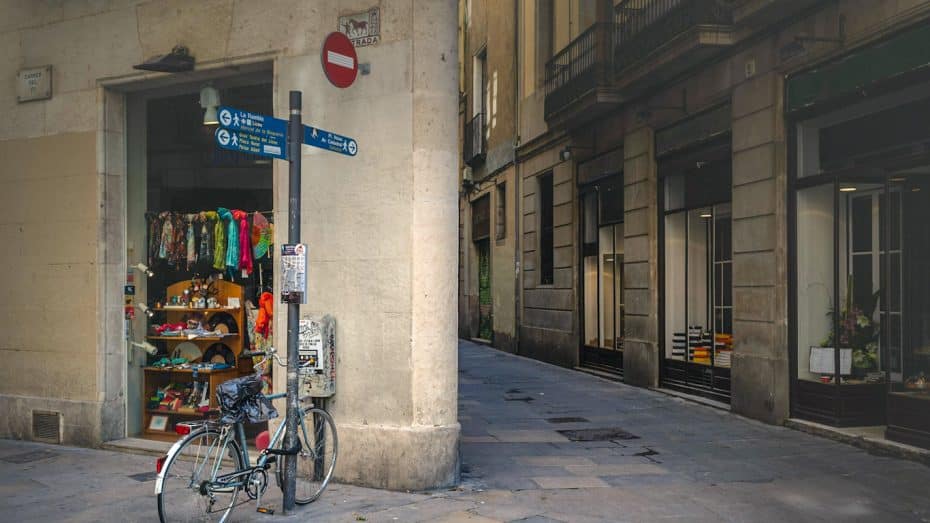
- La Barceloneta. La Barceloneta is Barcelona’s most famous urban beach, located between the Old Town and the Mediterranean Sea. This area went from a fishing village to a modern and upscale neighborhood. Hence, you will find top luxury hotels with sea views in this part of Barcelona. This area is lovely at sunset.
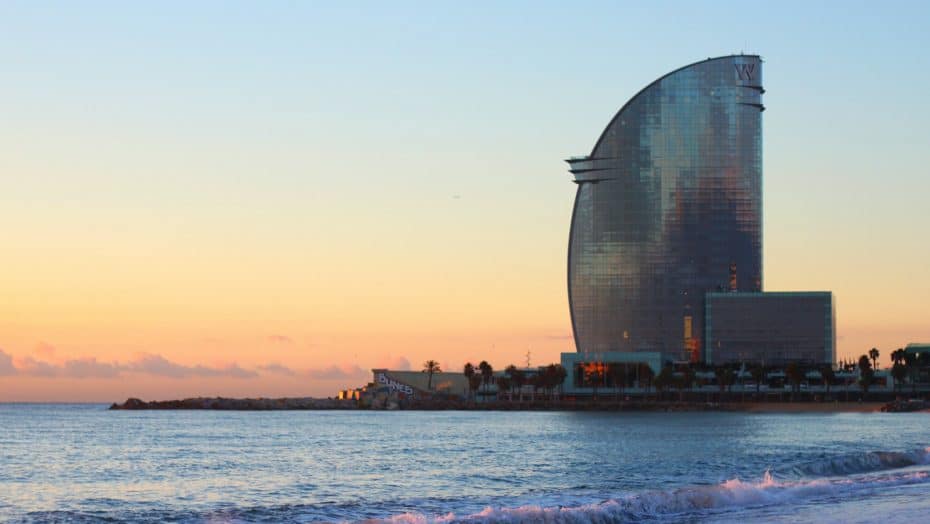
3. How to Get to Barcelona
- By plane. Reaching Barcelona by plane involves arriving at the Barcelona-El Prat Airport, 7 miles (12 kilometers) southwest of the city center. This airport has connections with most European cities, cities in the United States and Canada, and some places in Latin America. Upon landing, you can choose between taxis, buses, and trains to enter the city. The Aerobus service operates from both terminals to Plaça de Catalunya, with a ticket cost of around €5.90 every 10 minutes from early morning until late at night.
- By train. For train services, Barcelona-Sants Station is the central railway hub located in the west-central area of Barcelona. It provides high-speed rail services, including AVE trains to major cities across Spain, such as Madrid and Seville. Tickets vary in price depending upon destination and booking class. For example, a trip from Madrid to Barcelona might cost between €40 to €130 for a standard seat if booked in advance.
- By bus. The primary bus stations in Barcelona are Estació del Nord and Estació de Sants. Estació del Nord is in the city’s eastern part, predominantly serving regional and international destinations. You can reach this bus station by metro using the Arc de Triomf station on Line 1 (Red). Estació de Sants is in the western region near Sants-Montjuïc and facilitates national and regional travel. This station also connects to the Sants Estació railway station.
4. Transportation in the City
Barcelona’s public transport network covers most of its urban area. The system includes buses, metros, trams, trains, and taxis, each serving different parts of the city with varying operational hours and costs.
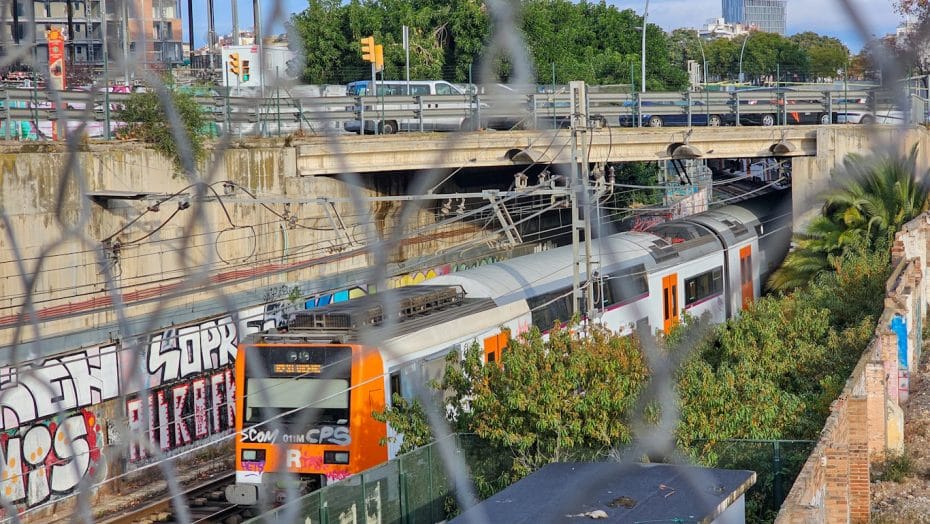
The Barcelona Metro consists of 8 lines (L1 to L5, L9 to L11), each distinguished by different colors and numbers. It serves over 1.5 billion passengers per year. The operational hours are typically from 5:00 am until midnight on weekdays, extended to 2:00 am on Fridays, and continuous service on Saturdays. A single journey ticket costs €2.40.
Buses in Barcelona are frequent and cover extensive areas inaccessible by the metro. The bus network runs daily, with schedules adjusting to demand. So, the busiest periods have more frequent buses, while nighttime service is less frequent. Prices for bus tickets are the same as for the metro.
Trams in Barcelona have two main lines: Trambaix (T1, T2, T3) and Trambesòs (T4, T5, T6). These lines work from around 5:00 am to midnight. Costs are consistent with metro and bus fares.
Regional and suburban train services provided by Rodalies de Catalunya connect Barcelona to surrounding towns and areas of Catalonia. The R1-R4 lines operate in concentric zones from the city center outward, with prices varying by zone.
Finally, taxis in Barcelona are metered, with base rates starting at approximately €2.50 and additional charges per kilometer traveled or for services such as airport pick-up.
5. Must-See Attractions During a First Trip to Barcelona
There are so many things to see and do in Barcelona that you will need more than one trip to see everything. Or, at least, to see everything without running out of energy. Nonetheless, here are the must-see attractions during a first trip to Barcelona:
- Sagrada Familia. The Sagrada Familia, a large unfinished Roman Catholic church, is one of those landmarks everyone needs to see at least once. The architect Antoni Gaudí designed it, and its construction started in 1882. However, the work on this Modernismo masterpiece will continue until at least 2026. You can get tickets for the Sagrada Familia online to skip the lines.
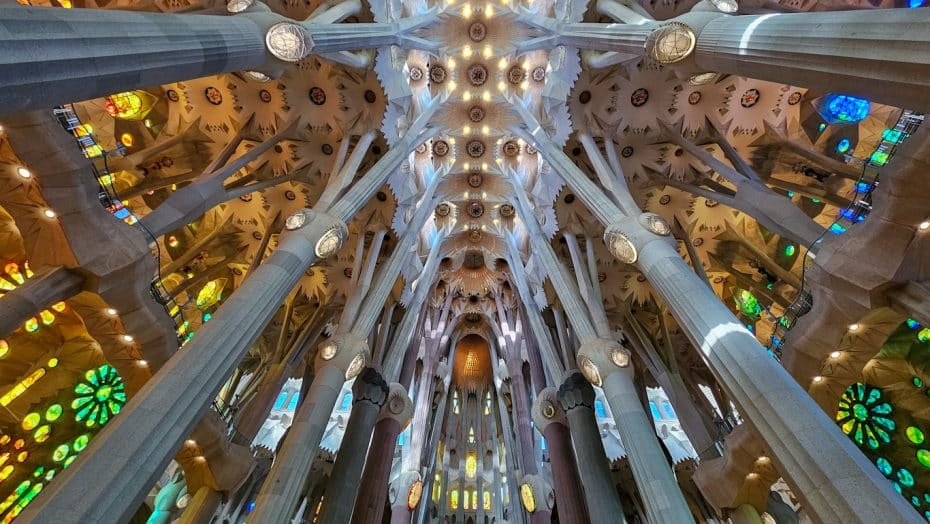
- Park Güell. This park is also essential in Barcelona. Located on Carmel Hill, the park’s designer was also Antoni Gaudí. Park Güell stands out for its intricate designs and architecture, greatly influenced by nature’s forms. In particular, its trencadís, a mosaic made from broken ceramic pieces, makes the park striking and beautiful.
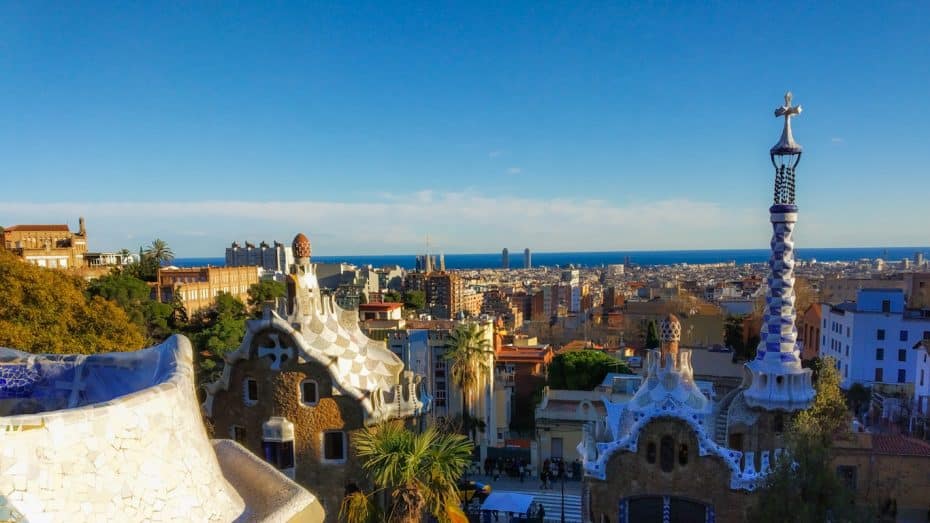
- Montjuïc. This hill has a flat top overlooking the harbor and is southwest of the city center. Montjuïc is home to several attractions. These include an old fortress at its peak and sporting and cultural venues built for events such as the 1992 Olympics.
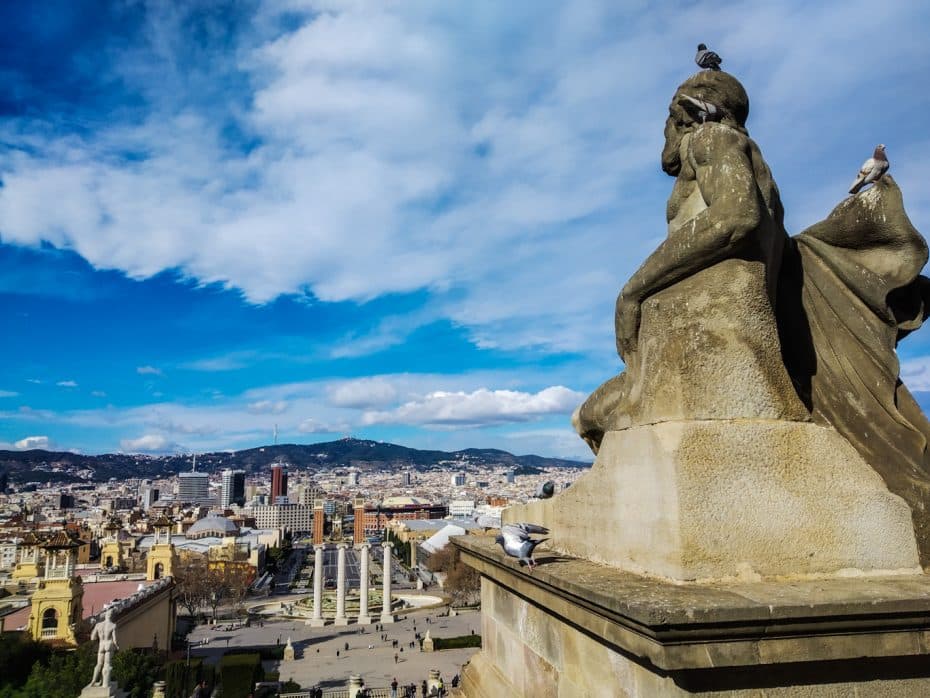
6. Must-Try Food and Dishes in Barcelona
Several dishes from Catalan cuisine are must-tries in Barcelona. One popular dish is “pa amb tomàquet” (bread with tomato), commonly served as an appetizer. The bread is rubbed with ripe tomatoes and garlic and seasoned with olive oil and salt for this recipe. This simple dish originated from the Catalan countryside and has become a staple in Barcelona’s flavors.
Meanwhile, seafood lovers should try “suquet de peix,” a flavorful fish stew. The dish usually contains fish like monkfish or hake, potatoes, garlic, saffron, almonds, and peppers. It originated from the fishermen of Catalonia, who created the dish using the day’s catch.
For meat-based dishes, “botifarra amb seques” is an excellent choice. This dish consists of a botifarra sausage served with white beans, often garnished with parsley and garlic. Restaurants like Can Culleretes, located in the Gothic Quarter, offer this traditional meal for around 12 euros.
Regarding desserts, “crema catalana” resembles crème brûlée but has a distinct taste due to the custard’s lemon peel and cinnamon flavoring. It typically costs around 4-6 euros in local cafes.
7. Best Events and Festivals in Barcelona
Barcelona hosts several popular events and festivals throughout the year.
For starters, the La Mercè festival, the feast day of Our Lady of Mercy, is around September 24. This event’s activities are in the city center and involve music performances and traditional Catalan dances like the Sardana.
Another significant event is the Primavera Sound Festival, held near the sea at the Parc del Fòrum, northeast of the city. The dates for this event are usually at the end of May or the beginning of June. The festival features a range of musical acts worldwide, playing all kinds of genres. Thus, artists like Arcade Fire, Radiohead, and Kendrick Lamar are among the long list of past performers.
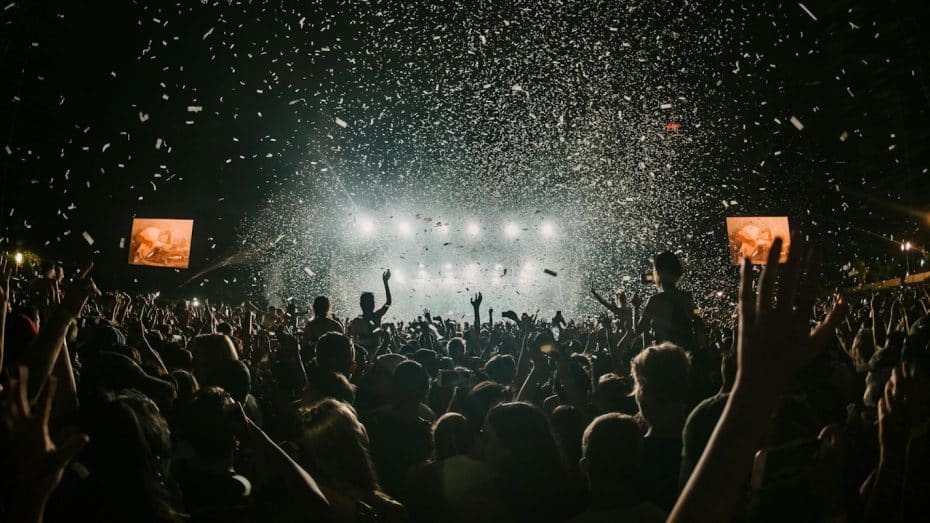
The Festes de Sant Joan, celebrating Saint John’s Day, come at the start of summer, June 23-24. The main activities occur at night on beaches such as Barceloneta, in the city’s eastern part. Fireworks and bonfires are common and involve celebrations that continue until dawn.
Lastly, the Sonar Festival is an annual three-day electronic music event in mid-June. Locations include Fira Montjuïc, southwest of Barcelona, for Sonar by Day. Meanwhile, further out from the city center, Fira Gran Via, towards the west, welcomes Sonar by Night.
8. Safety and Common Tourist Scams to Avoid
Pickpocketing in Barcelona is not a recent development, although it may seem like that because of how many posts on Social Media you see about it. Reports and data suggest a surge that coincided with the city’s growing popularity as a tourist destination in the late 20th century. The incidents are more frequent in areas with high foot traffic, such as La Rambla, the Gothic Quarter, and public transportation hubs.
These crimes are frequently carried out by organized groups who employ distraction techniques. For example, one person may ask you for directions while another executes the theft. Notably, the thieves in Barcelona tend to target wallets, passports, mobile phones, and other small items.
As a result, you should take certain precautions to protect yourself from pickpocketers. First, you should carry bags that close securely and can be held in front of your body. Also, please be careful of unsolicited help or distractions and use money belts or hidden pouches instead of back pockets.
The Barcelona City Council and law enforcement agencies have implemented measures to combat pickpocketing. These include heightened police presence in high-risk zones and awareness campaigns directed at visitors. Despite these efforts, pickpocketing remains a significant concern in Barcelona’s most popular districts.
9. Lesser-Known Places to Visit
As I mentioned before, Barcelona has a lot of things to see and many, many crowds. So, if you want to avoid lines and packed places, these are some places you could visit:
- Hospital de Sant Pau. Located northeast of Sagrada Familia, this hospital’s construction was between 1902 and 1930 by the architect Lluís Domènech i Montaner. This hospital complex is a UNESCO World Heritage site and an excellent example of Modernisme architecture with detailed mosaic work. The complex opens at 9:30 AM and closes at 4:30 PM in winter and 6:30 PM in summer. You can get ticket for the Hospital de Sant Pau online.
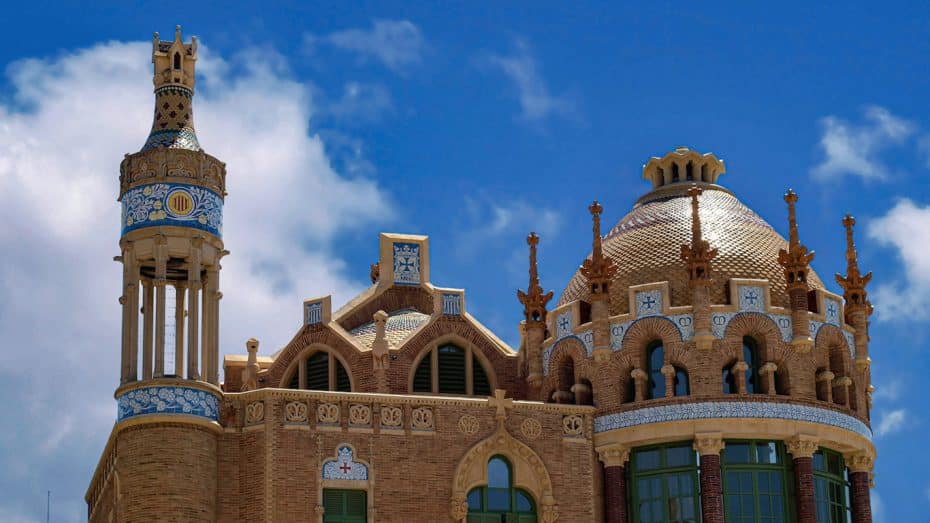
- Palau de la Música Catalana. This concert hall dates back to 1908 and is west of La Rambla. The Palau de la Música Catalana architect is the same one who worked on Hospital de Sant Pau. It particularly stands out for its intricate glass and tile decorations. You can book a tour of the Palau de la Música Catalana to see the beauty of this lavish music hall up close.
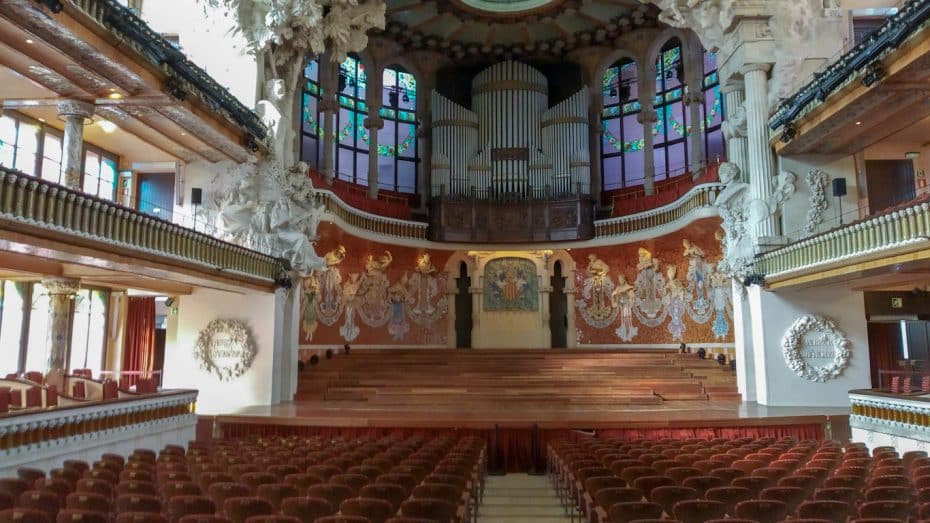
- Parc del Laberint d’Horta. In Barcelona’s western region lies the Labyrinth Park of Horta, which dates back to 1791. With an entrance fee of about €2.23, this historical garden features a maze of tall hedges. This park provides a peaceful atmosphere away from the city noise. You can visit it from 10:00 a.m. until dusk between Wednesday and Sunday.
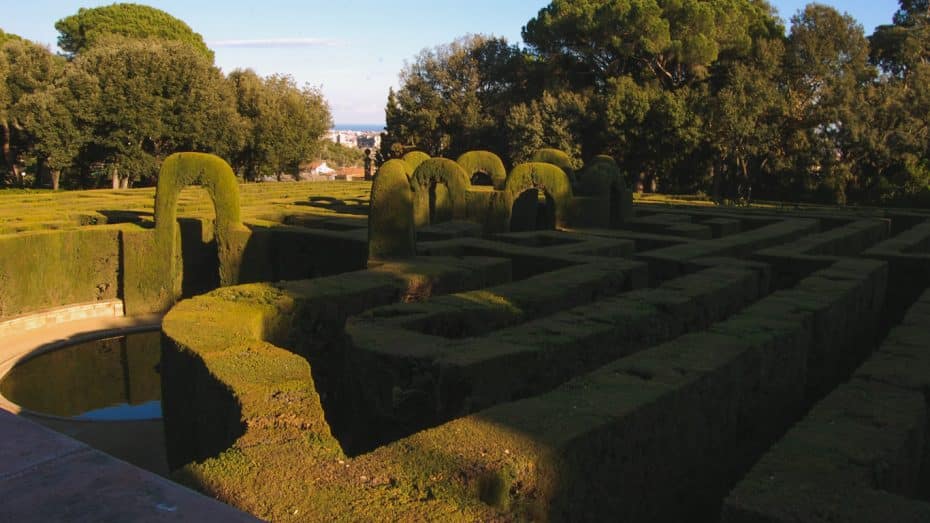
10. Best Day Trips from Barcelona
If you have some extra time during your first trip to Barcelona, here are some day trip suggestions:
- Montserrat is a mountain range approximately 27.9 miles (45 kilometers) northwest of Barcelona. The mountains are famous for the Santa Maria de Montserrat Abbey. To reach Montserrat from Barcelona, you can take a train from Plaça Espanya station, which takes about an hour. Tickets can cost around 22 euros, including the train ride and access to the rack railway or cable car up to the monastery.
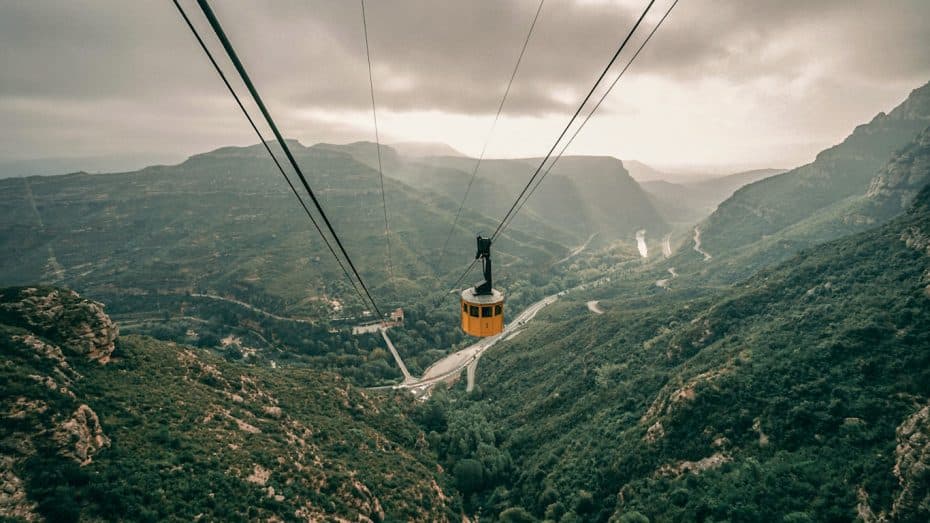
- Sitges lies about 21 miles (35 kilometers) southwest of Barcelona and is known for its beaches, often quieter than those in Barcelona, and for its LGBT bars and clubs. By train, it usually takes about 30 minutes to reach Sitges from Barcelona’s Sants Station. A round-trip ticket costs roughly 8 euros.
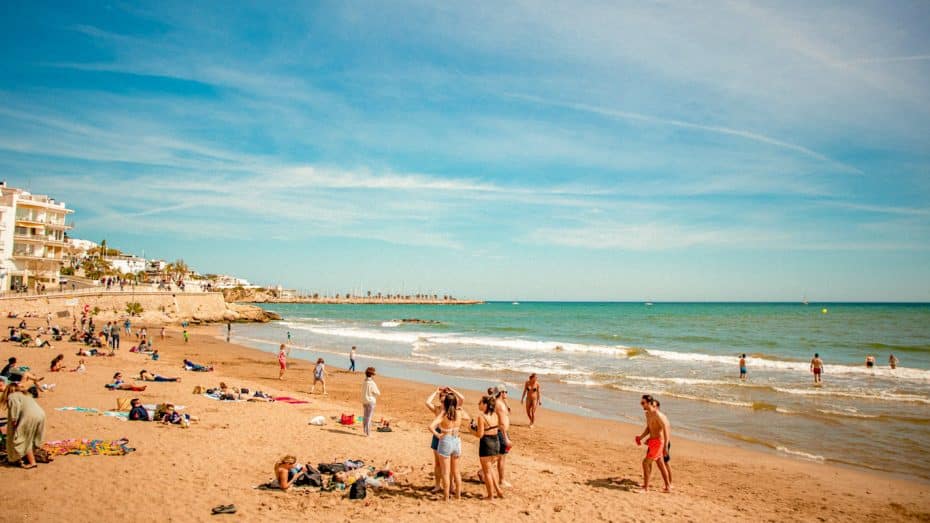
- Girona, 62 miles (100 kilometers) northeast of Barcelona, is known for its well-preserved medieval architecture. A train journey from Barcelona Sants to Girona lasts around 38 minutes on the high-speed AVE service, with tickets starting at 25 euros one way.
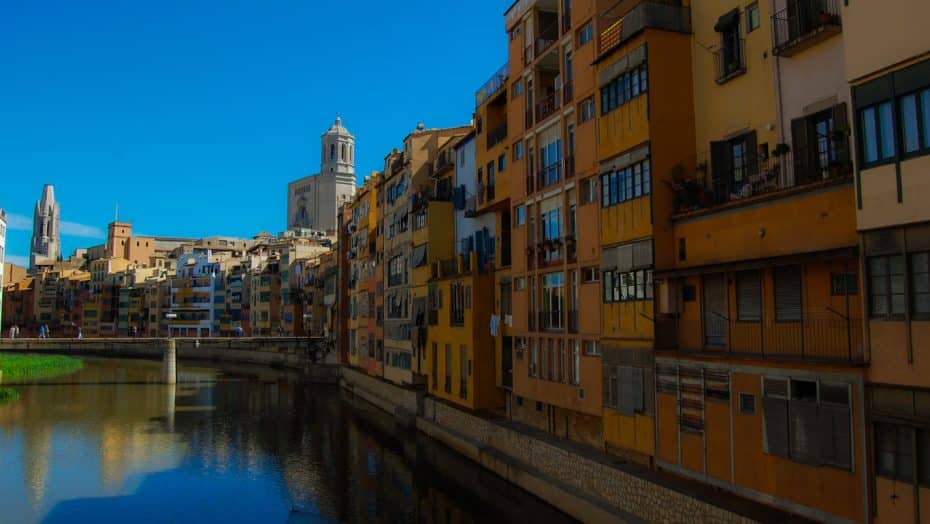



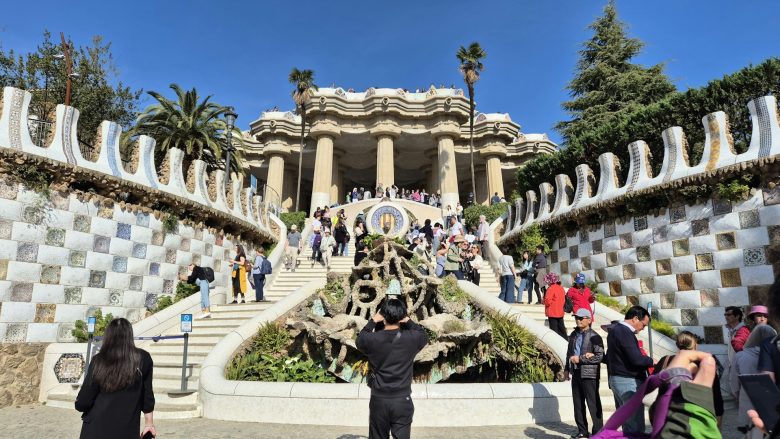
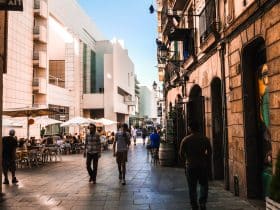
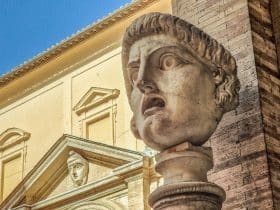
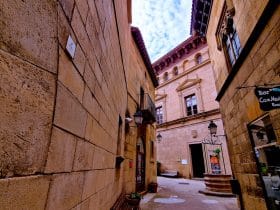
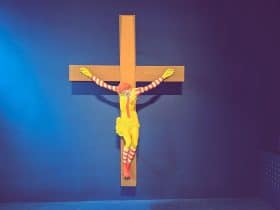




















Leave a Reply
View Comments